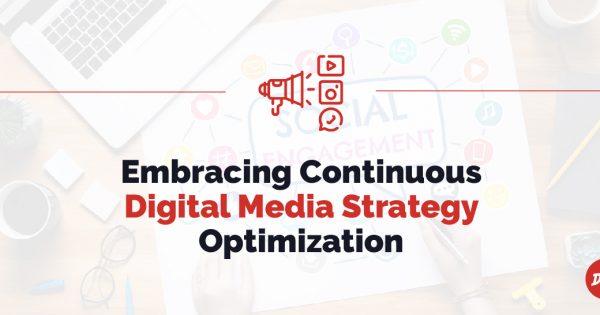You’ve probably heard you need to differentiate your firm. How do you do it and is it actually all that important? Come to think of it, what exactly is brand differentiation?
For professional service organizations, differentiation can mean the difference between swimming in a sea of sameness or becoming the go-to leader in your field. Some brands are more comfortable doing things the way they’ve always been done; others say they’re trying to appeal to the largest possible audience. But if you don’t differentiate yourself from the dozens or even hundreds of others out there in your profession, you’ll have a hard time gaining the competitive advantage you seek. Why? Because the buyer needs a reason to choose you over everyone else.

Differentiation & Positioning: What They Are, How They Differ
More than a half century after marketer Jack Trout first introduced brand positioning to the world, the concept is more relevant than ever to businesses looking to connect with potential clients. Today’s professional services marketplace is larger, more crowded, and more easily found, with clients and clients having an enormous array of firms to choose from.
To appeal to a substantial audience within your professional services segment, you have to find ways to set your firm apart. Differentiation and positioning are about building a unique package of benefits that appeals to your target audience. Positioning and differentiation are complementary approaches with slight differences, particularly with respect to professional services businesses.

What is Positioning?
Positioning is the place in the market you want your business to hold, especially in the mind’s eye of your target audience. It can be subtle and difficult to detect but can be easier to spot if you look at it from your own position as a consumer. Take cars, for example, where the idea of perception as reality excels. BMW and Mercedes Benz position themselves as luxury vehicles, Tesla sets itself apart as a clean energy alternative, and Kia and Hyundai brand themselves as affordable.
What position should your services occupy in your potential client’s mind? How do you want people to think about you? Influencing perception (who you are, how you help, what you can uniquely do for a client) are what positioning is all about.

What is Differentiation?
Differentiation relates to positioning in the sense you want to attract the same clients your competition attracts. If another professional services firm’s offerings overlap with your target audience, you need to think about how you’ll stand out and be the more attractive option.
A common misconception is that being cheaper than the competition is the best way to differentiate yourself. We’ll get into that a little more later, but it’s safe to say that’s usually a good way to end up in a race to the bottom.
To understand why most other successful brands don’t seriously under-price their products or service, put yourself in the consumer role again. When you’re in the mood for a soft drink, do you choose Pepsi, Coke, Sprite, or another popular brand? Why do you choose it? Is it for the taste, the level of caffeine, or is something more intangible like the good memories it evokes? These qualities are what differentiate one soft drink from the next.

Let’s look at a specific example of Nike’s positioning strategy. Nike provides a commodity item (shoes) to hundreds of millions of people around the world every year. Nike is horizontally positioned. Their position is that they believe in ‘celebrating the high performing athlete in you’ – whether the customer is a real athlete or not, they appeal to that demographic. They back this position up with ‘products that are strong, flexible and lightweight to help you push further and faster than ever before to ‘win’. They just happen to make shoes.
Shoes, on the surface, are all much the same. But everyday, thousands of people choose Nike – because Nike embodies that position in their mind.

The Differentiation/Positioning Connection
Positioning and differentiation connect in important ways. It can be confusing, but a good way to look at it is:
Positioning is based on the differentiating characteristics or qualities that make your business better than your competition’s in the mind of your target audience.
Both concepts are strategic actions and are designed to create a desired position for your business in the market rather than having it be defined by your competitors. The result is your ideal clients have a compelling reason to choose you.
To illustrate our positioning and differentiation points in this piece, we’ll use an accounting firm as an example. The concepts covered, though, apply to whichever professional service sector you’re in.

What’s a Brand Differentiation Strategy?
Here’s a fairly simple way to illustrate a differentiation strategy. A professional service organization such as an accounting firm can have a vertical or horizontal position. What does that mean?
- Vertical segmentation is industry or category specific. You focus on working with clients in a specific field – such as health care, information technology, or travel companies etc. For example, an accounting firm might work specifically with clients in the construction industry.
- Horizontal segmentation takes into consideration demographic information or the speciality you hold. So, one accounting firm might only work with high-worth individuals or families. Clients may come from many sectors, but they have a particular trait in common.
It’s also possible to combine the two. For example, a forensic accountant (horizontal) only works in the construction arena (vertical) or an estate and trust accounting firm (horizontal) only works with individuals bringing in more than a million a year (also horizontal).
Planning Your Brand Differentiation Strategy
To get started strategizing how your firm will differentiate itself, look at how you currently handle your business model. Does your segment typically bill by the hour? Is the target audience you want to reach not particularly interested in watching their bill climb with every phone call, email, or other activity? If so, you might want to design a new business model where you charge a retainer and the rest is billed as a percentage of results.

Before we move on to the different types of differentiation strategies, let’s recap:
- Positioning is the place you hold in the mind’s eye of your target audience.
- Differentiation is how your firm is different or stands out from your competitors on a non-price basis.
From a marketing perspective this is important, particularly for professional service businesses whose average client might not know specifically what the provider does. Put another way, pretty much everyone knows what an accountant does, but they don’t know the ins and outs of specific services.
Your ability to connect with an audience rests on positioning and differentiation. If the way you present yourself and your services relates to people on a one-to-one basis, the more likely it is they’ll feel emotionally connected with your firm and do business with it.

Types of Brand Differentiation Strategies
A differentiation strategy is multi-pronged but can generally be condensed into three steps:
- Identifying differentiating competitive advantages.
- Choosing the competitive advantages that will build the best position.
- Selecting a global positioning strategy.
Once completed, you must then effectively communicate your chosen position to the market.

The right positioning strategy improves your brand’s visibility both online and in the minds of your target audience. There are several approaches you can take and, as we mentioned before, rarely if ever is lowering your price one of them.
Here’s what we recommend instead:
- What features of your service can be highlighted that differentiate you from your competitors? What do you want to be known for?
- What benefits does your service offer that the competition does not?
- What unique problems does your target audience have that only you can solve?
- How do your services financially benefit clients if they act today?
- Are there additional services or features you can offer such as access to complementary service firms?
Whatever it takes to make your firm stand out—and as long as it offers real value—is what defines a good differentiation strategy.

How to Choose a Brand Differentiation Strategy
It often happens you’ll need to choose between two similarly positioned options. That’s where differentiation helps in the decision-making process. For instance, on the surface the odds are good that two accounting firms can meet similar needs of a targeted market segment. The differentiation questions set out above help you drill down to discover why your firm is the one they should choose.
What you’re looking to do is lay out qualitative, focused, and innovative qualities that disrupt or change the norm of how people do business with your type of professional service.
With product differentiation, it can be easier because manufacturers can come up with special features that set them apart. With professional services, a lot of the work is done on a one-to-one basis to meet a client’s needs, so one good way to differentiate is in how you market and “sell” your services. It’s about providing value before they even become a client.

Case in point:
- A typical digital marketing strategy for accountants and other service providers goes something like this: Here’s a list of our services, here is what we offer to address your problem, would you like to hire us?, please sign on the dotted line.
- You might differentiate yourself by making the process more consultative. For example, when a potential client first speaks to someone in your organization, that person may walk them through a unique process to help them understand where they are in their journey, where they want to be, and the steps your firm is going to take them through to get there. With this approach, even if the services you provide are exactly what a competing firm offers, the way you sell them can be a great differentiating strategy to try.
- Or try innovating within the service itself. Can you switch up your business model, reconfigure the structure you follow, and add in extra services you provide but others don’t? Explain to potential clients why these services, say like a particular piece of software or proprietary tech, will speed up the process. Selling that experience makes your offerings that much more compelling.

What Makes You So Special?
Do you currently have a differentiation strategy? Is it working? How do you know?
Here’s a few ways you can assess it:
- First and foremost, how laser-focused do you seem from your target audience’s perspective? Many professional services business owners fall into the predicament of being too close to the situation. They know all the inner workings of the business, including things a client never thinks about. You might say you just plain know too much. And knowing too much can get in your way of connecting with a prospective client. Ask yourself instead, what does the potential client see when they look into your business?
- What’s the message your professional service organization is putting out there? Is it clear through your marketing what the vertical, horizontal, or combo position is you hold in the market? Are you effectively communicating your differentiation via price, quality, and focus? Is the message being made clear? Is it consistent in every single channel you use, i.e. does the heading on your website’s home page say the same thing as your firm’s brochure? Is your core message communicated through all social media platforms? Do the things you write about on your blog always relate back to your unique position?

In the end, differentiating and positioning yourself in a winning way is about looking at your market as a whole. To pull out in front of your competitors, put yourself in the shoes of potential clients, look at what the competition is doing, and devise a list of what you can offer that sets you apart.
Not seeing much to set you firm apart from the others? Here’s the deal, if everyone in your line of work or niche is offering the exact same things, no one is positioning or differentiating themselves. If you all have the same service list, if it all seems the same from outside, chances are it is all the same. So even if you think your services are better, the way you market yourself won’t matter if everyone else is doing it the exact same way.
Today, most business relationships start online. If a potential client can’t tell from looking at your website how you’re different or if they can only understand your differentiation by speaking to a staff member, then it’s not working. clients today don’t want to spend time “getting to know you” once they’re in your office or on an online consultation. Want to build client satisfaction and loyalty? Give them everything they need to know about you ahead of time.
One of the biggest payoffs you’ll realize from this approach is that you’ll know you stand a good chance of retaining the client because they’ve already vetted you. They’re happy because they don’t waste time finding out you can’t offer them what they need and you’re happy because you haven’t spent otherwise productive time on a prospective client who’s not a good fit.
One final tip. When defining your differentiators avoid cliché terms and phrases like quality, best results, and skilled communicators. “We’re super professional” is not the right answer to what makes you special!
The bottom line: if you can respond “everyone” when asked who you serve, you’re not well-enough positioned in the market. In fact, you’re not positioned at all. It’s time to get to work building a differentiation strategy that improves your business’ visibility and gives you the competitive advantage you deserve.



